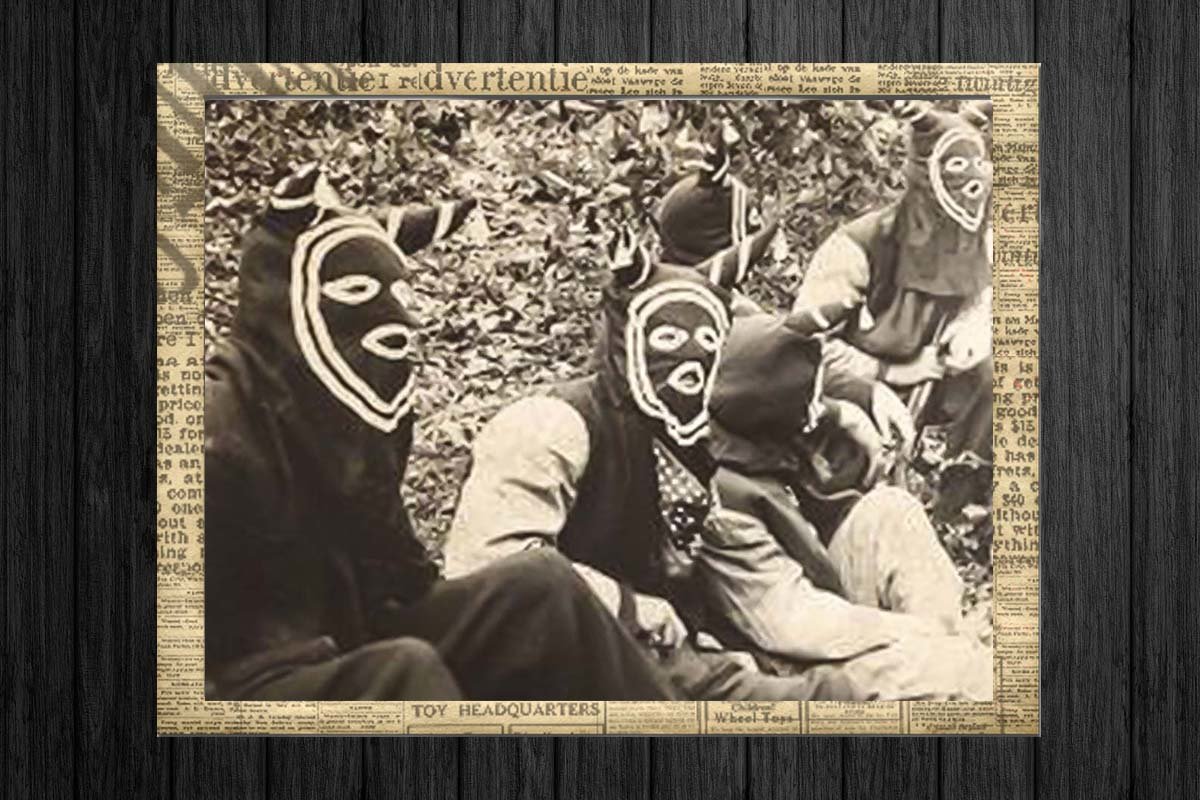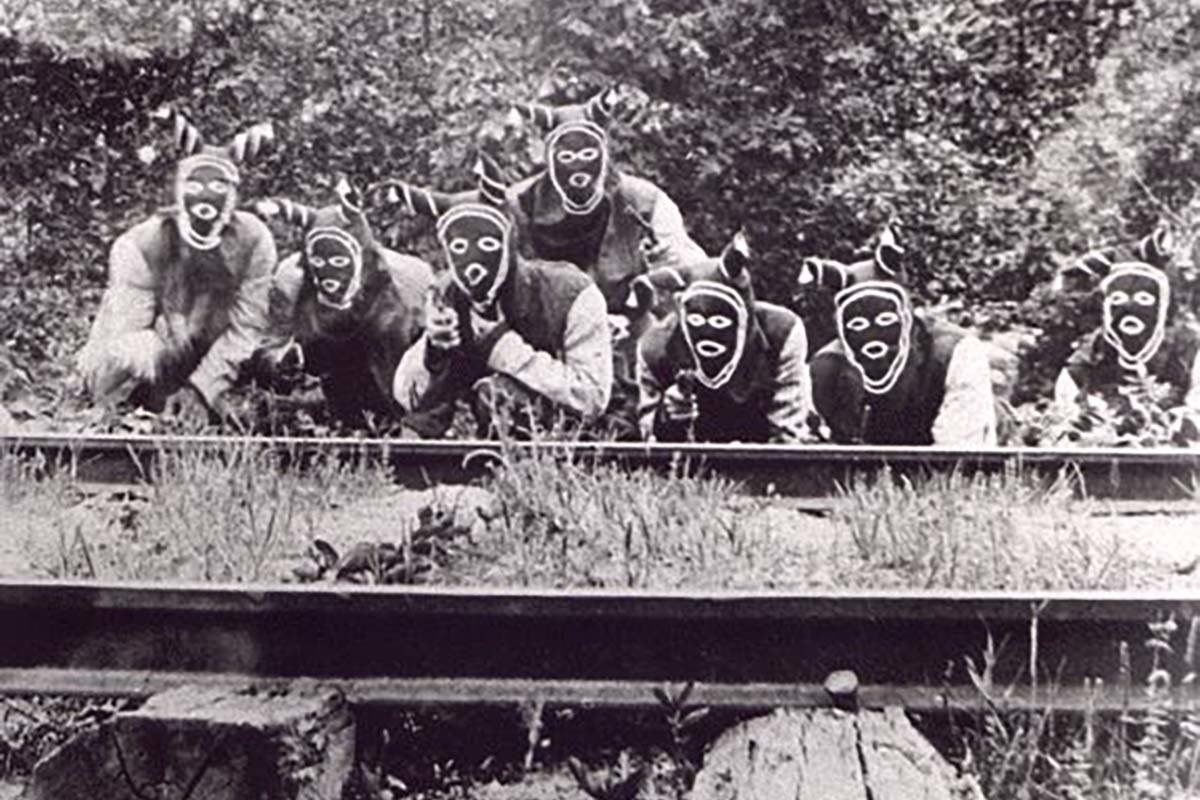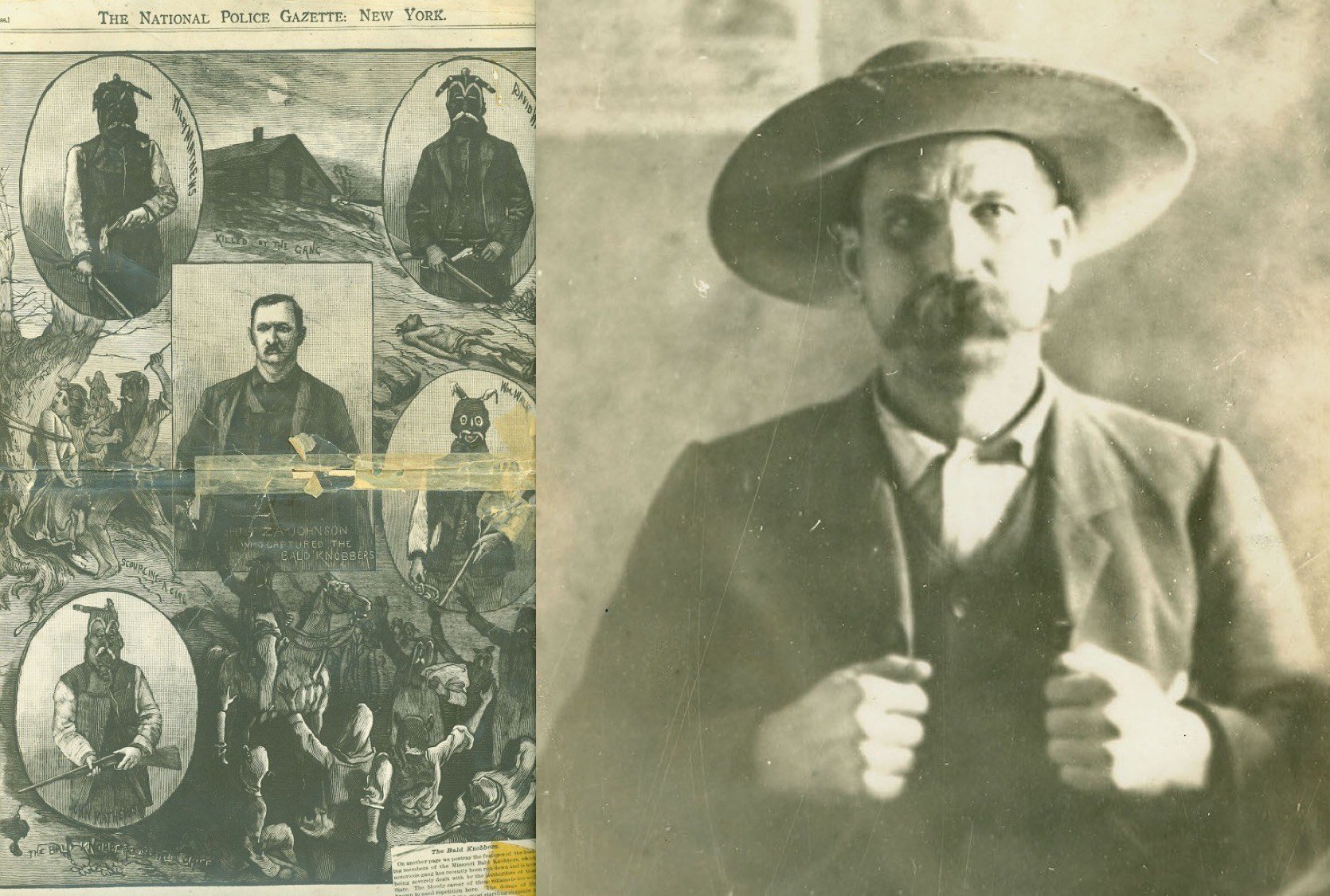The Bald Knobbers: Ozark Mountain Vigilantes Who Took Law Into Their Own Hands

The Bald Knobbers were a vigilante group organized in the 1880s to restore law and order in southwest Missouri. The Bald Knobbers were later depicted, as pictured here, in the 1919 film The Shepherd of the Hills. Composite by Coffee or Die Magazine.
Civil War Union Army veteran Nathaniel N. Kinney expected to live a quiet, retired life after he purchased a ranch in Taney County, Missouri. He soon found that a dark underbelly of postwar crime had moved into his home county, corrupting society with murder and theft without reprisal. But Kinney was not the kind to sit by.
Throughout the 1880s, Kinney helped assemble the Bald Knobbers, a violent, 900-member vigilante group that roared through the Ozark Mountains of southwest Missouri enforcing laws as they saw fit.
The Bald Knobbers — who took their name from the bald, treeless mountainside where the original group of 13 men organized — vowed to use vigilantism to fight criminals and so-called bushwhackers, postwar highwaymen who preyed on civilians while living in the hills. Groups like the Bald Knobbers weren’t a rarity in the late 1800s. During the post-Civil War period, established local governments were often so weak — and the postwar populations so bitterly divided — that the localities descended into vacuums of lawlessness in which city trade unionists, civil rights supporters, outlaws, cattle rustlers, gold thieves, Comanches, Kiowas, and Apaches battled for power.
Where the Bald Knobbers and other vigilante groups fit in history is often debated. Many such groups were little more than their own criminal gangs, or they were focused on reclaiming power lost in the Civil War. The Ku Klux Klan began as a vigilante group and claimed the same “law and order” mandate as the Bald Knobbers, even as the Klan focused on creating and enforcing the social order of Jim Crow. But other vigilante groups across the shattered country acted as law enforcing militias in areas where law and order were otherwise lost.

“Due to the lack of effective law enforcement on the rapidly expanding frontier, well-respected taxpayers and civic leaders formed hundreds of vigilante movements that captured and punished horse thieves and counterfeiters, murderers and rapists, loose women and ‘uppity’ free Negroes,” writes author Elmo Ingenthron, a descendant of both Bald Knobbers and anti-Bald Knobbers, in the 1988 book Bald Knobbers: Vigilantes on the Ozarks Frontier. “They called themselves the Ku Klux Klan, Regulators, Anti-Horse Thief Association, Honest Men’s Leagues, Citizen’s Committees, and Bald Knobbers.”
Kinney, 6-foot-2 or taller and weighing between 220 and 290 pounds, was a former special agent for the Post Office Department and recognized the plague of anarchy threatening his county — Taney County — which was populated by farmland and widely separated towns. Other Union Army veterans recognized the threat, too, and fell in with Kinney.
“Over thirty men had been shot to death in the county since the war, and not one of the murderers had been punished by civil authorities,” Kinney said in a formal statement, according to an 1888 article from The Sun. “The best men in the county gradually drifted to my side, and it became a war between civilization and barbarism.”
As news of the Bald Knobbers’ vigilante justice, lynchings, and intimidation tactics spread beyond the region, new chapters of the organization began forming in the neighboring counties of Christian, Douglas, Greene, and Stone. Although these chapters might have had goals and intentions similar to those of the original, each chapter morphed into its own entity. However, since the chapters were affiliated with the original Bald Knobbers, all positive and negative interactions they had with the public or with criminals reflected on the entire Bald Knobber movement.

Each chapter established its own rules and distinctive disguises, such as black hoods with horns or menacing faces painted on masks. The original members from Taney County were the only chapter that didn’t wear disguises, aside from bandanas to cover their faces. These disguises were later immortalized in their portrayal in the 1919 movie The Shepherd of the Hills.
One example of the Bald Knobbers’ vigilante justice occurred in April 1885. A Bald Knobber heard rumors that a man named Newton Herrell, who was in the Forsyth jail awaiting trial for the murder of his mother’s lover, was likely to be acquitted. The county had a history of acquittals for cold-blooded murders. In the middle of the night, an estimated 100 Bald Knobbers surrounded the jail on horseback. Kinney sent a squad of men to the sheriff’s home to bring him to oversee Herrell’s hanging. The sheriff begged them not to kill the accused, but the Bald Knobbers weren’t actually planning to hang Herrell; they intended to frighten him and local officials. They hung nooses over the jail door and in the courthouse. Then, they got on their horses and rode out of town. Their message was clear.
Overall, the Taney County Bald Knobbers were successful in restoring peace and order. However, those in defiance of their tactics — typically citizens with allegiances to the Confederacy — formed an anti-Bald Knobbers group. The factions clashed, and townspeople took sides. The warfare between the groups led an arsonist to burn down the county courthouse. That was one step too far for the governor of Missouri, John Marmaduke. He ordered the state militia into the county, and the Taney County Bald Knobbers eventually dissolved.
Read Next:

Matt Fratus is a history staff writer for Coffee or Die. He prides himself on uncovering the most fascinating tales of history by sharing them through any means of engaging storytelling. He writes for his micro-blog @LateNightHistory on Instagram, where he shares the story behind the image. He is also the host of the Late Night History podcast. When not writing about history, Matt enjoys volunteering for One More Wave and rooting for Boston sports teams.
BRCC and Bad Moon Print Press team up for an exclusive, limited-edition T-shirt design!
BRCC partners with Team Room Design for an exclusive T-shirt release!
Thirty Seconds Out has partnered with BRCC for an exclusive shirt design invoking the God of Winter.
Lucas O'Hara of Grizzly Forge has teamed up with BRCC for a badass, exclusive Shirt Club T-shirt design featuring his most popular knife and tiomahawk.
Coffee or Die sits down with one of the graphic designers behind Black Rifle Coffee's signature look and vibe.
Biden will award the Medal of Honor to a Vietnam War Army helicopter pilot who risked his life to save a reconnaissance team from almost certain death.
Ever wonder how much Jack Mandaville would f*ck sh*t up if he went back in time? The American Revolution didn't even see him coming.
A nearly 200-year-old West Point time capsule that at first appeared to yield little more than dust contains hidden treasure, the US Military Academy said.












